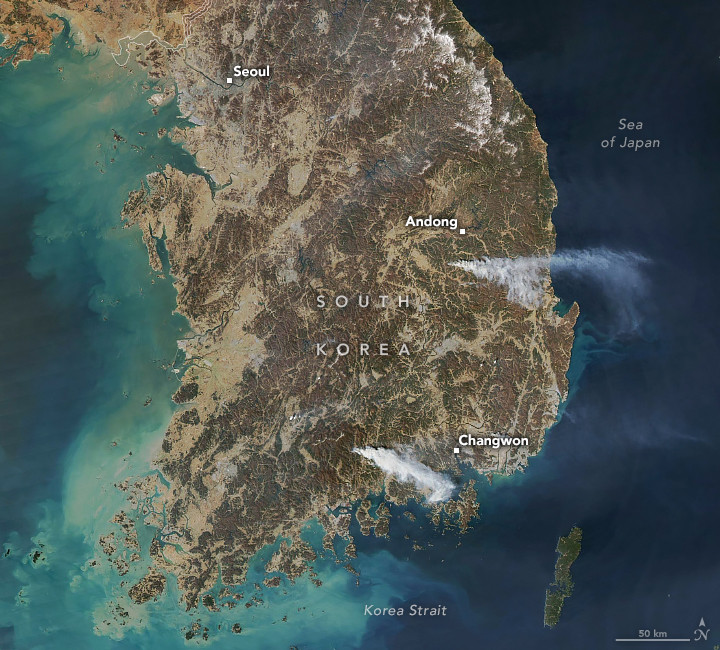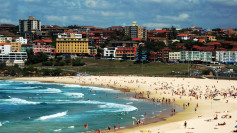Wind-driven wildfires sweeping across southern South Korea have killed at least 24 people, injured more than two dozen, and forced the evacuation of over 27,000 residents, officials said Wednesday, in what authorities are calling one of the worst wildfire disasters in the country's modern history.
The blazes, which ignited last Friday in the mountainous county of Sancheong, quickly spread to neighboring regions, fueled by dry weather and powerful winds. More than 43,000 acres of land have burned across multiple provinces, including North Gyeongsang and South Gyeongsang, devastating residential areas, industrial sites, and culturally significant landmarks.
Among the dead are four firefighters and government employees killed in Sancheong after being overrun by fast-moving flames. A 73-year-old pilot also died Wednesday when his S-76 firefighting helicopter crashed near Uiseong during suppression efforts. The crash is under investigation.
Acting President Han Duck-soo addressed the nation in a televised statement, calling the situation unprecedented. "Damages are snowballing," Han said. "There are concerns that we'll have wildfire damages that we've never experienced, so we have to concentrate all our capabilities to put out the wildfires in the rest of this week."
The Korea Forest Service raised its wildfire alert to its highest "serious" level, mobilizing 4,650 personnel and more than 130 helicopters to combat the active fires. Han said only 5 to 10 millimeters of rain were expected Thursday, offering limited hope for natural relief.
The Uiseong fire alone destroyed more than 30 structures at the ancient Gounsa Buddhist temple, built in 618 AD. Among the losses were two state-designated treasures: a 17th-century pavilion erected over a stream and a 1904 building from the Joseon Dynasty. "It was an extremely painful feeling, and I wondered why something like this could happen," said Joung-ou, a 68-year-old monk at Gounsa.
Authorities say most victims were elderly residents in their 60s and 70s who were unable to evacuate quickly enough. In Andong, a historic city in North Gyeongsang Province, 79-year-old Kwon So-han described fleeing flames that overtook her home: "The fire came from the mountain and fell on my house."
In addition to Uiseong, active fires continued to rage in Andong, Cheongsong, Yeongdeok, Yeongyang, and Ulsan. Villages near the UNESCO World Heritage-listed Hahoe Folk Village in Andong were evacuated as smoke and wind intensified. Evacuees were relocated to temporary shelters including school gymnasiums.
The Ministry of Justice said 500 inmates at a detention center in Cheongsong were relocated as a precaution. No damage was reported at the facility.
The Central Disaster and Safety Countermeasures Headquarters said 26 people have sustained injuries, with 12 reported in critical condition. Over 200 buildings and numerous vehicles have been destroyed, including homes, factories, and public facilities.
Officials believe some of the fires were caused by human error, including illegal grass burning during tomb-cleaning rituals and sparks from welding equipment. The government said it would increase enforcement against unauthorized outdoor fires and review emergency response protocols after the crisis subsides.
Forest fire expert Lee Byung-doo from the National Institute of Forest Science described the Uiseong blaze as spreading at an "unimaginable" scale and speed. The Korea Heritage Service confirmed that at least eight cultural assets had been damaged or destroyed in the ongoing disaster.
"It was like the apocalypse," said Lee Seung-joo, a 39-year-old truck driver who watched the fires engulf the mountains near Andong.
Han said the government would "thoroughly review all shortcomings in the wildfire response once the crisis is controlled and seek to improve prevention strategies for the future." South Korea has experienced below-average rainfall this year and has already recorded 244 wildfires-2.4 times higher than during the same period last year.






